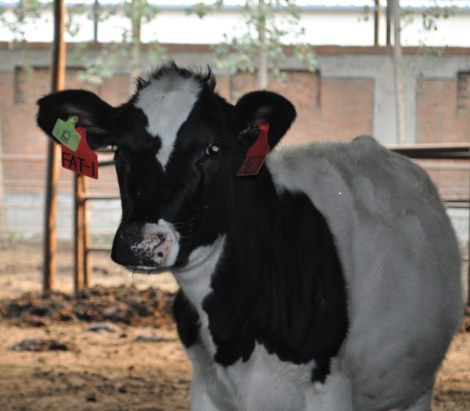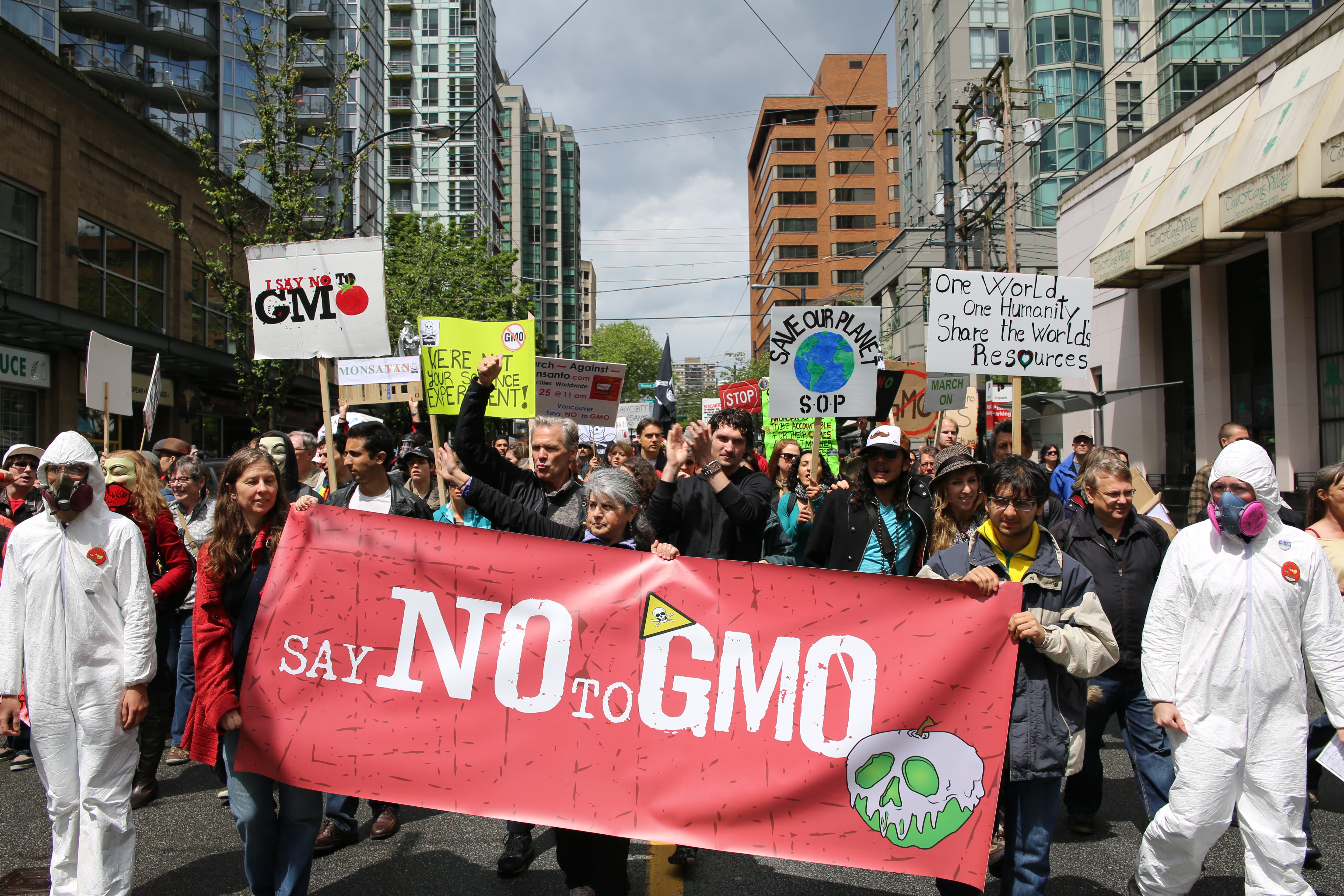When I point out to a genetic-engineering enthusiast that the technology hasn’t lived up to its hype, I often hear the same rejoinder: “We’d have all sorts of amazing transgenics out there if it weren’t for the bans and oppressive regulations.”
So I set out to determine if this was true. Is there evidence that groups fighting against GMOs have thwarted good technologies that would otherwise make agriculture more sustainable? I asked several plant scientists if there were actual examples of projects that had been abandoned.
Kevin Folta, a plant scientist at the University of Florida, emailed to tell me about the BS2 tomato. It has a gene that protects it from bacteria of the genus Xanthomonas. Here’s a lovely animation by Duc Phan Tran, explaining how Xanthomonas attacks a plant, and how resistance works:
By using the BS2 tomato, farmers could avoid spraying their fields with antimicrobial heavy metals. And, Folta said, the plants are shovel-ready. “BS2 tomato is alive and well at UF” Folta said.
But there’s no reason to try to get this tomato into the hands of farmers, Folta said.
“It costs too much — [getting through the regulatory process would cost] $5-10 million on the cheap side, takes too long, and then you just have the products smeared by activists that threaten whole industries if they consider adopting transgenic approaches.”
There’s a bit of a chicken-and-egg problem here: Does the controversy over genetic engineering increase the cost of that regulatory process, or is the point that the controversy would kill sales afterward? It seems to be a little bit of both.
Other scientists suggested other examples: “Fungus resistant banana, Xanthomonas wilt resistance in banana, cassava and sweet potato resistant to key viruses,” wrote Wayne Parrot, a professor of plant breeding and genomics at the University of Georgia. “These are real world examples where the crops were developed in the public sector by international research centers. The crops are tested and ready to go, but approval is not forth coming.”
There is, however, a disparity between what a scientist thinks of as “ready to go” and what a farmer thinks of it, and this may explain much of the confusion on this subject. Once scientists have solved the puzzle of transferring disease resistance, for instance, from one plant to another, plant breeders have to solve another — sometimes much harder — puzzle: Ensuring that the trait actually works out in the field.
Enoch Kikulwe, a Ugandan scientist working on the Xanthomonas wilt resistance in bananas, recently told the Globe and Mail newspaper:
Although GM bananas look promising for large-scale multiplication and dissemination, empirical evidence of the success of such organisms is still limited.

International Institute of Tropical AgricultureXanthomonas-infected banana plants.
The same goes for Golden Rice, the beta-carotene-enriched crop designed to end vitamin-A deficiency in southeast Asia. I emailed with Achim Dobermann, deputy director general of research at the International Rice Research Institute, where scientists are working on Golden Rice. After all the genetic engineering is done, there’s a lot of work that remains for the traditional plant breeders, Dobermann wrote. They must backcross the engineered rice for generation after generation, watching for unintended effects, and insuring that they don’t lose any of the characteristics that make it economically viable. Finally, scientists have to cross these varieties with other locally adapted varieties of rice to spread it to different climates. It’s tedious work, and it takes a long time.
“It is relatively easy to do the initial discovery research for a new event,” Dobermann wrote, “but making it work in a reliable manner in actual breeding products (and a range of different genetic backgrounds) is what many scientists underestimate, particularly molecular biologists who mostly do lab work.”
It seems to me that sometimes that unexpected difficulty causes delays, which people blame on activists. That doesn’t mean that anti-GMO activists are blameless, Dobermann wrote:
Activists are the main cause for a regulatory system that essentially prevents most public sector players from developing such products.
And you can’t fully separate the technological delays from the regulatory delays, said Jose Falck-Zepeda, a researcher at the International Food Policy Research Institute. When the regulatory process is murky, as it is in Uganda, public institutions are less likely to invest in the work to develop a plant that may never be approved. When Brazil clarified its regulations with a 2007 law, Falck-Zepeda said, “there was a flurry of new technologies,” including a disease-resistant bean developed specifically for small farmers.
“I think genetic engineering is not as easy as the initial scientists envisioned it being,” said Greg Jaffe, director of biotechnology at the Center for Science in the Public Interest. But at the same time, opposition to genetic engineering has had an effect. “Obviously the debate, the controversy, clearly does have an impact on this technology: Scientists are choosing other subjects, students choosing to go into other fields, research dollars are spent elsewhere.”
Alison Van Eenennaam, a scientist at UC Davis, has a story that clearly demonstrates how this works. She developed a method of getting mice to express omega-3 fatty acids in their milk, and showed that it would be possible to transfer this trait to cows. That could make milk a lot healthier (we know that organic cows eating grass express more omega-3s, though not nearly as much as Eenennaam’s mice). But the USDA denied funding for this research, telling Eenennaam that it wasn’t worth the investment, because the milk would be so hard to sell.
On a recent visit to China, Eenennaam met scientists who had completed the work and bred omega-3 producing cows. She snapped a picture of one of these animals:

Alison Van EeenenaamA transgenic cow with the Fat-1 gene to produce omega-3s in its milk.
That’s a case where the instinctive “yuck” reflex led the United States to punt its research to China. But is that research that would have really made the world a better place? There is a strong argument that heart disease rates would plummet if we could get more omega-3s, but I can also imagine people protesting: “Wait, you want to make a transgenic cow so you can have heart-healthy milkshakes!?”
There is one other obvious example of proven GE technologies that have been cast aside due to the controversy: The technologies that already exist, and are banned in some countries. There’s widespread agreement among economists that there’s some economic benefit for the people of countries that allow GE technology. I’ve already examined the claim that GE technology helps poor farmers, and since I wrote that I’ve seen more recent evidence that it’s not just the wealthy, but also the smallholders, that can benefit.
So is the controversy over genetic engineering slowing innovation? Of course. But often the controversy is blamed for delays that have nothing to do with it. And, though I didn’t mention it above, sometimes it’s the patent negotiations that slow things down (or block all progress). Often the setbacks are technical, not political. If we greeted GMOs with the same enthusiasm that we display for, oh say, flat screen televisions, we’d certainly have more of them. But that wouldn’t mean that they’d live up to the hype. It would just mean that when things went wrong, we’d know who to blame.
Panic-free GMOS: See the full story list



